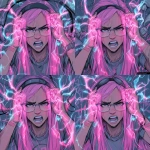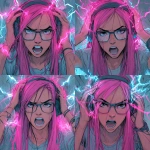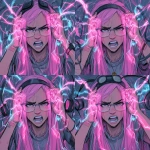Explore the Best AI Image Gallery

Quantum Creativity: Unlocking New Frontiers in Art and Design
The world of art and design is on the cusp of a paradigm shift, driven by the transformative power of quantum computing. This revolutionary technology, with its ability to process information at an unprecedented scale, promises to unlock new creative frontiers, blurring the lines between imagination and reality.
While still in its nascent stages, quantum computing has already begun to make waves in various fields, including medicine, finance, and materials science. Its impact on the creative industry is particularly intriguing, offering artists, designers, and innovators a powerful set of tools to explore uncharted territories.
Potential Applications in the Creative Realm
- Generative Art: Quantum algorithms can generate complex and intricate patterns, textures, and forms that are beyond the capabilities of traditional computers. This opens up exciting possibilities for creating novel artistic expressions, pushing the boundaries of aesthetics and imagination.
- Personalized Design: By analyzing individual preferences and data, quantum computing can enable highly personalized design experiences. Imagine clothing, furniture, or even architectural designs tailored to your specific taste and needs.
- Interactive Storytelling: Quantum-powered simulations can create immersive and dynamic storytelling experiences. Think of interactive narratives where the plot evolves based on user choices, leading to branching storylines and personalized outcomes.
- Enhanced Virtual Reality (VR) and Augmented Reality (AR): Quantum computing can enhance the realism and interactivity of VR and AR environments. Imagine exploring virtual worlds with breathtaking detail and interacting with digital objects in a more natural and intuitive way.
Ethical Considerations
As with any powerful technology, quantum computing raises ethical considerations that need careful attention:
- Bias and Fairness: Quantum algorithms can inherit biases from the data they are trained on. Its crucial to ensure that creative applications of quantum computing do not perpetuate existing societal inequalities.
- Copyright and Ownership: The ability to generate art autonomously raises questions about copyright and ownership. Who owns the rights to AI-generated creations? These are complex legal and ethical dilemmas that require thoughtful consideration.
- Accessibility and Equity: Access to quantum computing resources may be initially limited, potentially creating a divide between those who can benefit from this technology and those who cannot. Its important to strive for equitable access and distribution of benefits.
Future Trends
The future of quantum creativity is brimming with possibilities:
- Quantum-Inspired Design Tools: We can expect the emergence of new design tools that harness the principles of quantum computing, enabling designers to explore complex geometries, simulate materials properties, and create truly innovative designs.
- Collaborative Quantum Art: Imagine artists from around the world collaborating on a shared quantum art project, their contributions interwoven through interconnected networks. This could lead to unprecedented levels of creative synergy.
- Quantum Education and Training: As quantum computing becomes more prevalent, there will be an increasing demand for skilled professionals in this field. Educational institutions will need to adapt their curricula to equip students with the knowledge and tools to harness the power of quantum creativity.
Quantum computing is poised to revolutionize the creative industry, empowering artists, designers, and innovators to push the boundaries of imagination and expression. By embracing its potential while addressing the ethical challenges it presents, we can unlock a future where art, technology, and human creativity converge in extraordinary ways.


](https://images.ai-img.art/thumbnails/150/4c67c727683a835917441757b71ace563950f9178fa4826e09a55cfb092ac715.webp)










](https://images.ai-img.art/thumbnails/150/469bffae134ea97666025052588e76bb4dd4b6b98c4888cfd7873929a73156ff.webp)
](https://images.ai-img.art/thumbnails/150/fe996254fcb758c1365f3a22783ee6112ed5e34579deb401de674b06938efb2a.webp)














](https://images.ai-img.art/thumbnails/150/b94716d4b88da3e1ec3ab12162616a52ff5698251ac791ddf8478649889a0f47.webp)

](https://images.ai-img.art/thumbnails/150/985b7bf314caa205e59a2c973e979ce77cf5b24ca39799fffe2e30ea7c79ef07.webp)








](https://images.ai-img.art/thumbnails/150/4c5bdb0a0a1f761a911521333b9e3463c885aa247b42d1d311a97f2aa2c513d2.webp)